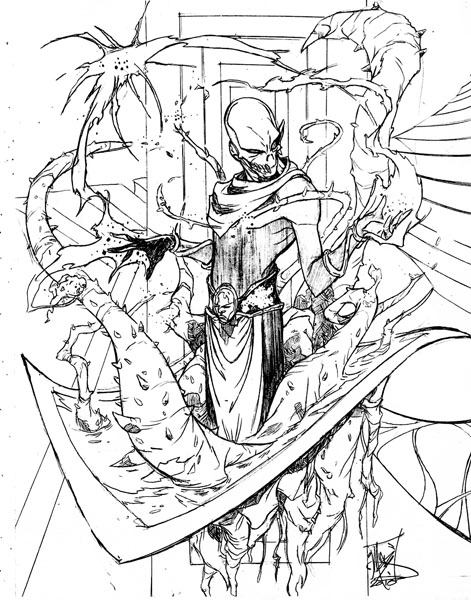Not too many years ago, I spent a lot of time constructing (in my head mostly, but also some notes and timelines) a superhero crossover universe inspired by Philip J. Farmer's
Wold Newton family (or the
expansion of the idea by Win Eckert and others). I've never wound up gaming in this universe, but I still think it would worth trying one day. The basic elements are these:
1) The comic books and other media we get are actually fictionalized/disguised versions of events in a real universe. They probably have as much relationship to real events and people as the movie Tombstone does to the OK Corral and the lives of the Earp brothers.
2) There is one, primary Earth. All the Marvel and DC heroes (as well as a number of other comic and pulp characters) inhabit this world.
3) This world is as "real" as our world, except for the inclusion of superpowers and what not, so people and institutions have behaviors and motivations much more similar to what we see outside our window than in the pages of kid's funny books. Also, "realistic" means people age; no sliding timescales.
Here are some examples of how that would be put into action:
Does there just happen to be two brash bowman who wind up with blonde girlfriends with sonic screams? Nope.
Green Arrow is a legacy hero, and "Hawkeye" is the original's sidekick grown up, who was
briefly a villain, then an
authority-questioning hero. he didn't pay enough attention to his side kick, and the kid fell into
drug abuse, but eventually gets clean and becomes a
SHIELD agent.
Or, here's the true history of some reptile-themed villains: A scientist named
Curt Connors, desperate to help injured vets like himself, sets up a special clinic in the Florida giving an experimental treatment--with
tragic results. One of these before doomed veterans gets his wife pregnant, and the child grows up to show
latent genetic damage and enters a life of crime:
Anyway, you get the idea. It's amazing how many of connections like these you could make, and I think it would make for a fun campaign with a lot of room for creative (at least in "discovering" connections) with the advantages of using established comics universes.






.jpg)














